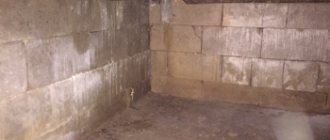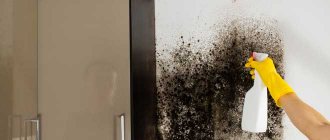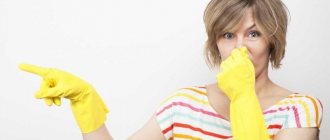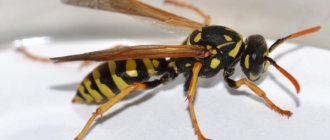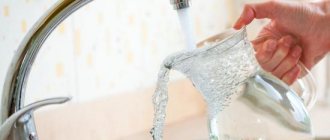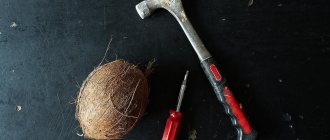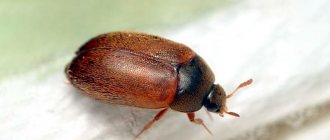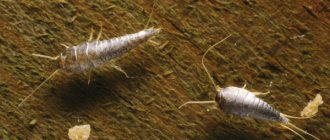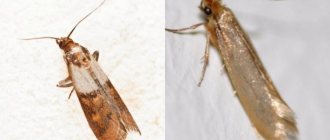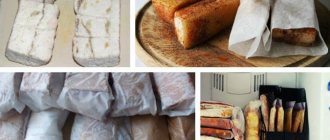Infection with fungus and mold on wooden floors is a common problem faced by home and bathhouse owners.
Spores actively develop in a suitable habitat, so it is impossible to get rid of them using wet cleaning.
To effectively eliminate fungus in the underground, it is necessary to find out the cause of its appearance, remove the formations and, if necessary, replace the floor covering.
Why does mold form under the floor and in the underground of a wooden house?
Fungus appears under the floor for a reason. Causes:
- The temperature difference between an uninsulated and/or unheated basement and living spaces causes condensation to accumulate and cause excessive dampness. And mold develops in a humid environment.
- Poor ventilation. In the musty, still air the fungus feels very at ease.
- Lack of antiseptic treatment of the materials from which the subfloor is built. Wooden parts of the structure are especially susceptible to mold and rot.
- The fungus can spread to the walls and floor of the basement from the products stored there if they are affected by it.
Fungus
Types and signs of fungal formations
Mold and fungi are the simplest forms of microorganisms that have long existed in nature. The following types of fungus develop on wooden surfaces:
- House sponge;
- White house fungus;
- Basement fungus.
Such formations pose a hidden danger not only to modern coatings, but also to human health. Fungal spores provoke frequent headaches, difficulty breathing, night cough and allergic reactions.
The spread of fungal formations is accompanied by the appearance of the first signs:
- Strong smell of dampness;
- Brown, black, dark gray and white spots with uneven edges and their further darkening;
- Moistened areas of the floor covering with color fading;
- Blistering, cracking and falling of the plaster layer.
In order to take effective measures to eliminate fungus on a wooden base, it is necessary to find out the main reasons for its appearance.
Harm from mold to property and human health
Visible mold under the floor of a wooden house can be the initial stage of a fungal infection. However, wooden floors, ceilings, and walls are destroyed very quickly under the influence of fungus. One day, not a wonderful day, the house may simply collapse.
Attention! Mold spores are microscopic in size and fly long distances. In a short time, under favorable conditions, a large area can be infected with the fungus.
The fungus causes diseases that are dangerous to humans, pets and indoor plants. Possible exacerbation of chronic ailments, development of allergies, rheumatoid and heart diseases, diseases of the respiratory system, up to the development of bronchial asthma.
Overview of the antiseptic products market
When folk remedies are useless, heavy artillery enters the battle - highly effective chemical solutions that are used both for prevention (initial treatment) and for “treating” already damaged elements. Let's look at the popular antiseptics that can be found on the shelves of construction supermarkets.
Wood for the external cladding of a house, like all elements of decorative interior design, must be processed without fail, otherwise the risk of damage is very high.
Tikkurila Valti - has excellent protective properties even in difficult atmospheric conditions, contains natural oils, and prevents the formation of mold. Volume 2.7 l – 1500 rub.
Let’s name several manufacturers of antiseptics that are popular and regularly occupy the top lines of the ratings:
Tikkurila. Known for a large range of multi-component impregnations that can protect wood in the most difficult conditions. Pay attention to Valtti Pohjuste deep penetration primer, Vinha covering solution. Tinted impregnation-glaze Valtti Color (Extra, Satin, Primer series) penetrates deep into wood fibers and does not form a film, as a result of which wooden products look natural.
Senezh The most reliable antiseptic is for deep impregnation, ideal for treating facades. It is not washed out by water and is able to protect wood in difficult weather conditions. Senezh Ecobio is designed for use inside the home, and Aquadecor was created specifically for decoration. There are many positive reviews about Senezh protective equipment for saunas and baths.
Belinka. Suitable for processing internal and external wooden surfaces. BELINKA BASE contains a concentrated portion of biocides, BELOCID is suitable for both prevention and treatment of contaminated surfaces
BELINKA IMPREGNANT is a colorless impregnation, good where it is important to preserve the natural texture of the fibers.
Aquatex. Perfectly protects logs, boards, lining, chipboards from mold and wood-boring beetles
Has more than 10 tinted options. The solution is used as a primer or impregnation.
Neomid. A well-known Russian brand with a wide range of antiseptic products. NEOMID 440 ECO effectively protects wood products in rooms with high humidity, NEOMID 400 is used for processing interior parts, NEOMID 46 BiO protects lumber from mold damage.
The list can be continued with the names of alternative products: Dufa Wood Protect, Sitex, Pinotex, Texturol, Woodmaster. When using this or that product, you must act strictly according to the instructions.
How to get rid of mold under the floor and in the underground of a private house?
The basement, cellar, and space under the floor of a wooden house most often suffer from the effects of harmful fungus.
How to get rid of mold on boards and joists?
When mold and rot are discovered under a wooden floor, the question of how to remove them is very pressing. If the boards are rotten by more than half, they should be replaced with new ones.
If the fungus is visible only on the surface, then:
- the top, contaminated layer must be removed with a scraper or a stiff metal brush;
- soak the boards generously with an antiseptic solution or the same copper sulfate, leave for several hours;
- whiten twice with Bordeaux mixture.
Treatment
Anti-mold agents and their use
There are quite a lot of means that can be used to treat a cellar.
- One of the most common tips on how to get rid of fungus in the underground of a wooden house is with the help of such a folk remedy as copper sulfate. 100 g of powder is diluted in a bucket of clean hot water. The solution is applied with a wide brush or roller to the walls, floor, and ceiling of the basement, and allowed to soak in. The treatment is repeated after a month.
- Lime is a long-known, well-proven folk remedy. 500 g of lime are stirred in 10 liters of water. To enhance the effect, you can add 200 g of formaldehyde. The liquid is applied with a roller or brush to shelves, floors, and walls. You can use a spray gun.
- Chlorine is an effective substance for getting rid of mold in the crawl space. Dilute chlorine bleach, “Whiteness” with water, the solution should be concentrated. First, mechanically remove the mold deposits, then generously moisten the surfaces with bleach.
Attention! Chlorine vapors are very toxic to humans and animals. Observe personal protective measures and wear a respirator. Ventilate the room thoroughly.
- A combustible sulfur bomb will get rid of any type of mold, as well as moss, which can also appear in a damp cellar. It is better to place the checker in a metal basin or tray, set it on fire and quickly leave the basement. After 12 hours, the cellar is opened, ventilated and dried.
Attention! To achieve the effect when using a sulfur bomb, ventilation pipes, windows, and cracks in the basement must be closed.
- Also among the folk methods can be noted treatment with solutions of vinegar, boric or citric acid, table salt, ammonia, and tea tree oil. However, they are labor-intensive and less effective compared to the above.
- A modern method of combating any pathogenic microorganisms is treatment with high temperatures using a microwave apparatus. The advantage of this method is that it is safe for people and pets, but is carried out only by specialized organizations.
Waterproofing, treatment and wall covering
It is impossible to remove mold from the underground of a wooden house without waterproofing the foundation. The process is labor-intensive, but necessary:
- The base of the cellar is exposed and cleaned.
- Then the cleaned foundation is waterproofed. Different materials can be used:
- polymer membrane;
- bitumen mastic;
- roofing felt;
- ready-made coating mixtures, etc.
- Drainage pipes are laid.
- Lay geotextiles.
- The last stage is backfilling and pouring the blind area.
Ventilation
It is impossible to solve the question of how to get rid of mold fungi in the cellar without a device for high-quality ventilation of the room. The fight will not be successful if you do not provide dry air in the underground of the house. The easiest way to arrange supply and exhaust ventilation is to install two pipes of the same diameter in opposite corners of the basement.
Ventilation
- The first pipe - the supply pipe - is mounted half a meter from the floor level in the basement. The top end is above the foundation.
- The exhaust hood is placed in the upper corner of the cellar, and rises 0.5 m above the ridge. It should be insulated (for example, with mineral wool) to prevent the accumulation of condensation.
- The outer ends of the pipes are covered with canopies.
Attention! The pipe material can be any: PVC, reinforced concrete, metal, plastic.
How to fill the underground from dampness?
To get rid of fungus and prevent its appearance in the basement or subfloor of a wooden house, follow a simple technology.
- The first step is to get rid of the top layer of soil in the underground. You should remove about 20 cm to remove all the overgrown mold mycelium.
- Next, you can spill the soil with a solution of copper sulfate for disinfection, let it soak in, then pour a layer of lime (1-2 cm).
- The next layer is geotextile.
- A cushion of sand and crushed stone is placed on it.
- Lay the next layer of dense impermeable film or roofing felt.
- You can install logs and lay a wooden floor.
Alternatively, you can fill the crawl space floor with moisture-absorbing expanded clay.
Recommendations for treating surfaces affected by fungus
You can use one of the previously described remedies or prepare another. For example, you can mix 1 cup of borax and 4 quarts of water in a large bucket, pour the solution into a spray bottle, and spray small areas with it. Large areas must be treated with a brush and mop. Blot the floor with this liquid. Wait about 10-15 minutes and scrub the floor with a brush. Blot it again with the solution and repeat again.
If necessary, the same solution can be used to treat parquet boards. Vacuum the floor thoroughly to remove dead mold. Wet the coating and floor again with a small amount of the solution and leave to dry for a couple of days. To help the areas treated with the solution dry faster, turn on the air conditioner or heater.
Borax will prevent the fungus from reoccurring. Replace baseboards and flooring. Before bringing things back into the house, treat them with a solution of borax and water.
Prevention measures
After the fungus in the cellar is destroyed, care must be taken to ensure that it does not reappear. Preventive measures will help with this.
- Insulate the building and install waterproofing.
- Make it a rule to regularly inspect rooms where excess dampness may appear, paying special attention to corners, joints and places where sunlight does not penetrate or is extremely rare.
- Ventilate the basement, avoid dampness.
- Treat all surfaces, both wooden and other materials, with a fungicidal antiseptic.
If you are in the process of construction, listen to the advice and take care in advance to prevent fungus from settling in the house.
- A ventilation device will avoid problems with dampness. If it is impossible to design a supply and exhaust system, at least make windows for ventilation. It would be good if sunlight would also penetrate through them.
- Insulate the foundation and waterproof the basement and subfloor.
- Building materials should be treated with an antiseptic.
- It would be good if heating was provided in the basement.
The boards turn black. This is bad?
The problem is well known and has probably been discussed on the forum. Only the SEARCH for the words “the boards are turning numb” did not yield anything sensible. So I'll try to start a thread with a question: how bad is this?
Edged board 25x100 for lathing under metal tiles and under plastic ceilings. Beam 150x100 for rafters. The material they brought was damp, but all white. In just two or three days, half of the boards began to actively turn black. It's clear it's from moisture. So what should we do with it now? How serious is this? What will happen to this blackness if the board is used in dry conditions? Won't this cause the boards to rot? Maybe there is some remedy?
So this is rot (((What you called “blackening”. Run a search, “compositions that protect wood from rotting” will be found right away..
2 Scorpio No, this is not bad, but very bad. Looks like prussic fungus. Depending on the moisture content of the lumber and the depth of the damage, the blue may appear more intense. They also say that pine turns blue, and larch and spruce turn black. But the latter rarely happens.
maybe it's a fungus
And what? Were the boards not stacked with spacers? NOT ventilated?
but no, in two or three days, at least ventilate it, or not. Obviously the author bought the soaked wood. Screw the product.
If you turn blue, you can’t do anything. You can't bleach it...it's mold. initially a common occurrence for forests in swamps, etc. (i.e. if the board is initially blue).
However, if it’s for sheathing, you can treat it with the appropriate impregnation and install it. It shouldn’t rot, but it won’t be suitable for front finishing.
PS By the way, in stores I saw veneered doors, under the veneer the whole timber is blue and this doesn’t stop the manufacturer, it’s not visible
I completely agree – this is a prussic fungus. Saw material from the spring forest. It was not ventilated or dried to a transport humidity of 15%. Can be treated with antifungal compounds. But perhaps it’s too late. Return it to the seller. or burn it.
What fear. “Lumber that has blue stains—blue stains—or spots of black spot mold is suitable for any structure.” " > (and more)
2 Scorpio You need to look directly. If it is only mold or prussic fungus, then when the boards dry, it will stop developing. True, the color of the boards will not change, the blue will remain, but this will not affect the performance or strength in any way, only the decorative ones. You can try bleaching, I’ve never tried it myself, so I can’t vouch for the results. And this is of no use for sheathing and rafters. It will be necessary to treat with a penetrating antiseptic, for example, green Senezh. But this is worth doing in any case, and not just because of defeat.
For the future, if you buy lumber for future use and will use it over a long period of time, then treat it with a paint or garden sprayer with a special antiseptic for transportation. It is colorless and decomposes over time, but for at least six months it will help prevent blue discoloration. And stack them with spacers to ventilate them and cover the stack from precipitation. Lumber should never be stored in bulk.
Causes of wood destruction
Let's assume that the inside of the house was lined with absolutely healthy boards. However, over time, they also began to turn blue and gradually become covered with ugly stains. What does this come from?
Mold reproduces by spores that are present absolutely everywhere - in the forest, in the fields, on the roads. It is estimated that forest-dwelling species living on living trees cover approximately 40% of the surface area of the trunks and branches of these trees and shrubs. They do not destroy bark and other tissues, but make them more porous.
Spores are easily carried by wind, animals and even shoes. If microorganisms, by any of the listed methods, enter a house where favorable conditions have been created for them, they quickly begin to multiply. The ideal conditions for the existence of mold are high humidity (from 70%) and temperature from +5ºС to +30ºС.
Good ventilation and moderate humidity are two conditions necessary to prevent mold in areas where water is constantly used, such as the bathroom
Wood is just one of the materials on which entire colonies of fungi settle. They can grow on rubble stone, concrete, plaster, paper and even plastic.
Owners of seasonal country houses in central Russia know very well: if you do not regularly heat a wooden house or do not monitor the condition of the basement and foundation, then dark spots will certainly appear in the corners, on the ceiling and even on the furniture.
The same problem threatens cellars and wooden baths if ventilation is not organized in them. Even the interior lining of the clapboard can become infected with fungus and become completely unusable if it does not have the opportunity to ventilate and dry out.
The lack of air circulation also favors the rapid growth of mold colonies. This can be seen in city apartments, where bathrooms are lined with wood panels and ventilation is poor.
If the surface of the panels is not treated with a protective compound, they will soon become covered with a light white or black coating, and over time the cladding will take on a neglected appearance.
Pinotex Base – deep impregnation for the top layer of wood, acts as a primer and antiseptic. Used in combination with decorative products - Pinotex Wood Oil, Pinotex Classic, etc.
Thus, the reasons for the appearance of fungus or mold are the lack of waterproofing, disruptions in ventilation, and high air humidity.
